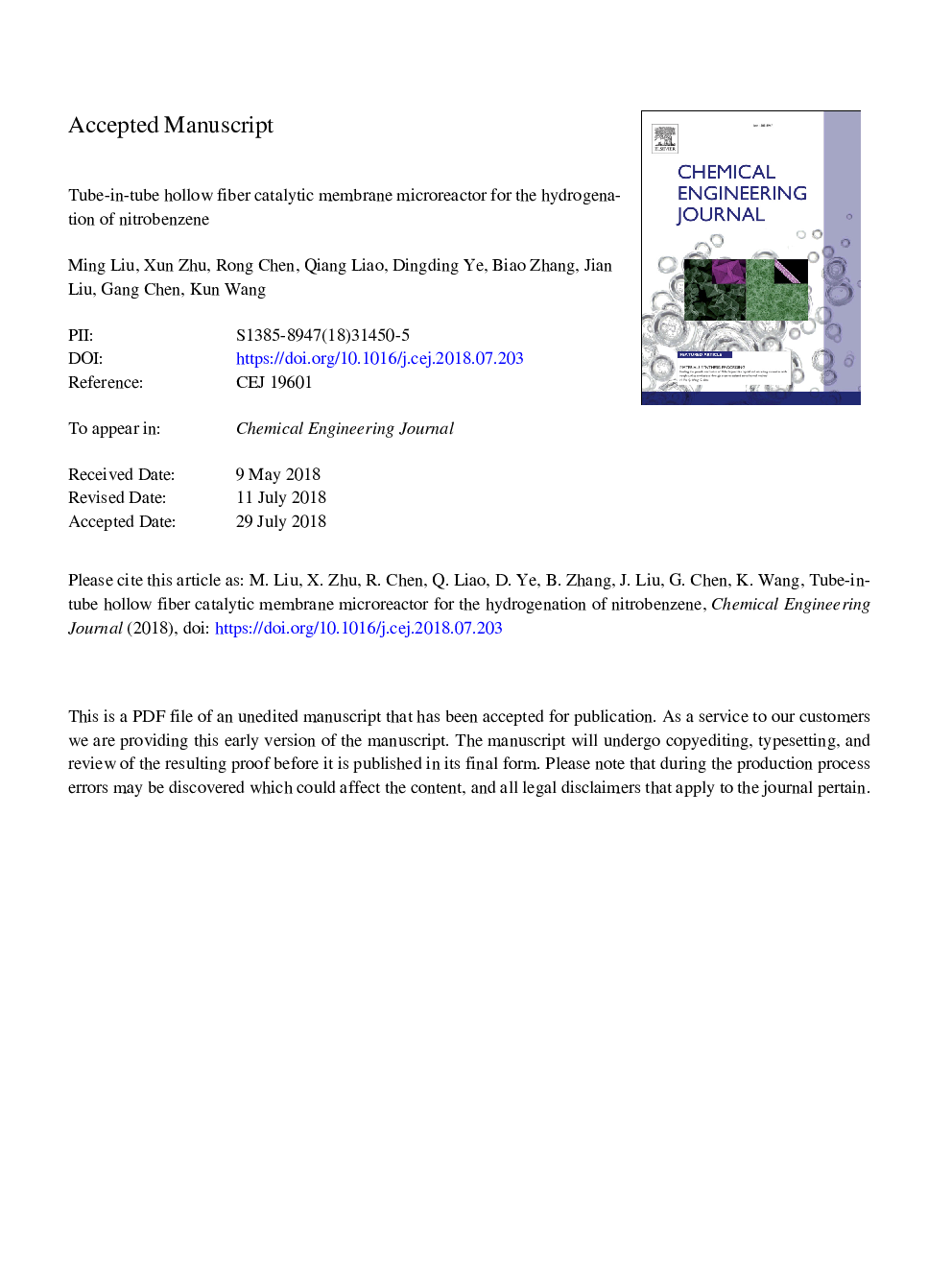| Article ID | Journal | Published Year | Pages | File Type |
|---|---|---|---|---|
| 6577945 | Chemical Engineering Journal | 2018 | 37 Pages |
Abstract
The miniaturization of membrane reactors aims to improve the mass transfer efficiency. A tube-in-tube hollow fiber catalytic membrane microreactor that contains dual characteristics of a catalytic membrane reactor and a microreactor was developed in this study. For a gas-liquid-solid (G-L-S) reactor, the immobilization of solid catalysts on a hollow fiber membrane (HFM) via layer-by-layer (LBL) self-assembly enables the model reaction of nitrobenzene hydrogenation to occur. The unique structure of the novel catalytic membrane microreactor separates the gas and liquid reactants and shortens the transfer distance. The experimental results showed that the nitrobenzene conversion was high during 30â¯h of continuous operation. The effects of the flow rates and inlet nitrobenzene concentration were also investigated. At a given gas flow rate, the nitrobenzene conversion and concentration of the product aniline decreased with increasing the liquid flow rate. Meanwhile, at a given liquid flow rate, an increase in the gas flow rate led to an increase in the pressure of the gas phase. Sufficient hydrogen promoted the reaction, increasing the nitrobenzene conversion and aniline concentration. In addition, the inlet nitrobenzene concentration affected the conversion. Higher concentration not only enhanced the reaction rate but also caused catalyst poisoning. Based on these results, the newly designed catalytic membrane microreactor is feasible to improve the performance towards multiphase reaction.
Keywords
Related Topics
Physical Sciences and Engineering
Chemical Engineering
Chemical Engineering (General)
Authors
Ming Liu, Xun Zhu, Rong Chen, Qiang Liao, Dingding Ye, Biao Zhang, Jian Liu, Gang Chen, Kun Wang,
